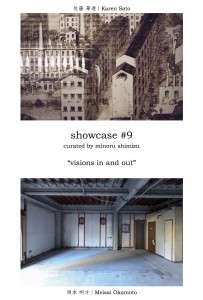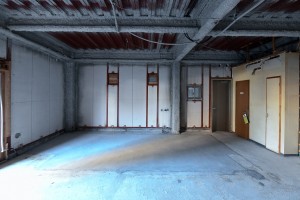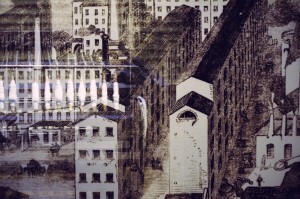showcase #9 “visions in and out”
curated by minoru shimizu
Meisai Okamoto | Karen Sato
2021.04.02(fri.) – 04.30(fri.)
open on fri., sat., & sun. 12:00-18:00
appointments are available on weekdays
- We have decided not to host an opening reception for this exhibition due to the COVID-19 pandemic. We appreciate your understanding.
.
eN arts is pleased to present the ninth edition of “showcase” curated by Professor Minoru Shimizu, one of Japan’s most respected contemporary art critics. “showcase” is a group exhibition focused on photography and itself has truly been a showcase for up and coming photographers since 2012. For “showcase #9”, Professor Shimizu has selected, from the perspective of “visions in and out”, two talented photographers, Meisai Okamoto and Karen Sato. The detailed information on the exhibition will be found in the next page, and the artists’ statements will follow.
We hope you will enjoy the photographic visions through Sato and Okamoto’s eyes.
Naomi Rowe | eN arts
→Click here to see previous “showcase” curated by minoru shimizu.
.
showcase #9, 2021
“visions in and out”
This is the 9th “showcase” since its inception in 2012 as a curatorial program for emerging talents of photography (see details in the archives of the gallery’s homepage). The theme of the show is “visions”, which have two meanings. The one is “visions” as optical images projected or printed on a plane. The other refers to “visions” that exist only for certain “visionary” people, but not in reality. The former is produced in a darkroom, as the latter in a visionary’s head. In both cases the visions need a closed space for its generation. How does this closure or shielding relate itself with the reality outside, and what kind of visions are produced through the relations? I have selected two artists who are inspired by each “vision” respectively.
Meisai Okamoto (b.1971) has been inexhaustibly inspired by the most elementary principle of turning the real world into images: Camera obscura and pinhole photography. Adding his original techniques and devises to the pinhole photography, Okamoto has produced surprisingly rich visions. The images emerging in the darkness of Camera obscura seem rather dreamy, but, as they are produced through the most elementary principle of image-making, they can be regarded as the most authentic images of reality, for they are optically generated firsthand images, not yet degenerated to “photography” or “cinema” in our everyday circulation.
Few people understand that there is no such thing as a focus of pinhole camera. Its vision consists of points of rays that pass through a pinhole. When the points are enough small, the image becomes dense, and when large, diffused. This is none other than the principle of pixel images. The most primitive photographic devise directs itself to the basics of digital images.
A few years ago Okamoto came to my portfolio review on the occasion of Canon’s New Century of Photography, and showed his pinhole works, which have been unforgettable since then.
Karen Sato (b.1983) won the Grand Prix of Canon’s New Century of Photography Award 2010 and participated in the first “showcase” in 2012. The uncanny, complex images represent facets of reality sensed by the artist. They are also images produced by light passing through the two pinholes (eyes) in the living Camera obscura (scull).
April, 2021
Minoru Shimizu
Minoru Shimizu: Art Critic. Regularly contributes essays and critics for photography books, art magazines and museum catalogues. Major English publications on art: “The Art of Equivalence” in Wolfgang Tillmans truth study center (Taschen, 2005), “Shinjuku, Index” in Daido Moriyama (Editorial RM, 2007), “Fiction and Restoration of Eternity” in Hiroshi Sugimoto: Nature of Light (Izu Photo Museum/Nobara, 2009), “Daido Moriyama’s Farewell Photography in Daido Moriyama (Tate Modern, 2012), “Guardian of the Void” in Palais Magazine No.19 (Palais de Tokyo, 2014).
.
Meisai Okamoto
The existence of the light enables the visions.
The visions inspire beauty and create its value.
People pursue and change the value of beauty depending on the era, principal and personality.
The pure forms that people cannot see exists only in the absolute darkness because era, principle and personality don’t matter there.
Given a slight light, the darkness creates vague images.
The form that people cannot experience through their visions.
The world that people could see thanks to limited information.
The image that we think we see is layers of many vague forms.
Darkness denies our visions.
In the dark, light creates visions.
The light that perceives the existence of the darkness is as beautiful as the darkness.
.
Karen Sato
Through transformations, a scenery exists in my feelings. The scenery appears linking the objects with my memories and thoughts. It is like chemical reactions. I photograph THE scenery.
.
-WORKS-
-INSTALLATION VIEW-



